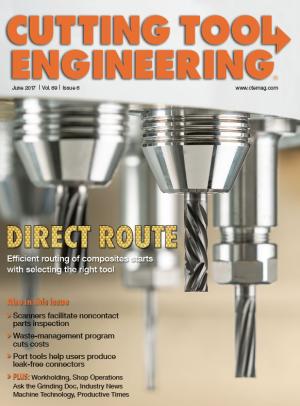Dear Doc: I work for a grinding wheel manufacturer that’s been invited to join a 3-year academic project. The financial investment isn’t big, but I’m wondering if the project is worth the money and, especially, our time. We’re interested in evaluating our bond formulations.
The Doc Replies: For companies in industry, academic projects can be a big win—or a complete waste of time—depending on the project and how it’s run. First, let’s look at the what’s-in-it-for-me aspect for each participant.
Professors need funding for their doctoral students, as well as articles to be published in academic journals—the publish-or-perish phenomenon. Doctoral students need to find some novel, original, scientific aspect of the research, hopefully with the help of the professor. They also must get journal articles published based on their work. Industrial partners typically want to learn something practical to help their businesses, such as the behavior of a new bond formulation in a specific grinding application.
Let’s imagine an ideal situation: While performing tests on wheels with various bond formulations, the student measures grinding forces, workpiece surface finish and wheel wear, and analyzes the worn wheel with an electron microscope. The student then reports the results to the industrial partner. The group members share knowledge so they can evaluate how the different bonds and, perhaps, the bond constitution affect grinding.
There may be another round of tests after some bond modifications. The student and professor then develop something novel for the thesis and academic articles. For example, how the bond bridges are fracturing or the impact of a bond additive on wheel wear. Meanwhile, with their new understanding of these bonds, the company develops new, better wheels. It’s a win-win-win.
But the process doesn’t always go smoothly. What are some potential pitfalls? The industrial partner may have unrealistic expectations, thinking the partnership will generate some revolutionary insight that will double sales. The professor may not know enough about grinding to design a test program that yields meaningful results. The test design is as important as the test. Perhaps the professor wants to develop some fancy, half-finished, complex abrasion model and plans to use much of the student’s time for that purpose—which doesn’t directly benefit the company.
Ask the professor to explain the game plan. If it’s too complicated to explain in layman’s terms, it probably won’t benefit you. Finally, beware of intellectual property issues. The professor wants to publish any findings, but may be restricted if what you develop is proprietary.
I’ve seen academic projects yield positive results for everybody. I’ve also seen academic projects yield frustration all around. Make sure you’re getting into something practical and be realistic in your expectations.
Related Glossary Terms
- grinding
grinding
Machining operation in which material is removed from the workpiece by a powered abrasive wheel, stone, belt, paste, sheet, compound, slurry, etc. Takes various forms: surface grinding (creates flat and/or squared surfaces); cylindrical grinding (for external cylindrical and tapered shapes, fillets, undercuts, etc.); centerless grinding; chamfering; thread and form grinding; tool and cutter grinding; offhand grinding; lapping and polishing (grinding with extremely fine grits to create ultrasmooth surfaces); honing; and disc grinding.
- grinding wheel
grinding wheel
Wheel formed from abrasive material mixed in a suitable matrix. Takes a variety of shapes but falls into two basic categories: one that cuts on its periphery, as in reciprocating grinding, and one that cuts on its side or face, as in tool and cutter grinding.


